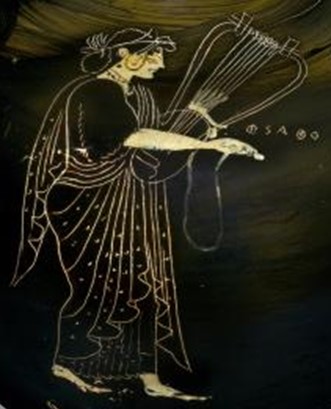Sappho Painter
Characters:
Theme: Pottery of ancient Greece
Competencies
Competence in Linguistic Communication
Personal, social and learning to learn competence
Competence in cultural awareness and expressions
Subjects and year by Educational System
Spain > Classical culture > 3rd ESO > Continuity of cultural heritage. Literature, art and science
Enunciation
Observations and context
Sappho's example served as a stimulus for almost all the surviving poets of Greco-Roman antiquity, from the Greeks (Mirtis and Corina, from Boeotia; Telesila and Praxila, from the Peloponnese; Erina, from the island of Telos; Mero, from Byzantium; Anita, from Tegea, a modest village in Arcadia? ) to the Romans (Melino, the elegiac Sulpicia, Herenia Procula, Sulpicia the satirist, the travellers Julia Balbila and Cecilia Trebula, Fabia Aconia Paulina, the last pagan...). Romantic writers used it as a shield to validate female authorship (Gertrudis Gómez de Avellaneda, Carolina Coronado, María Rosa Gálvez, etc.). With the contributions of the papyri found at the end of the 19th and 20th centuries, Sappho was once again translated and read.
This is a two-part activity, a first one to do some research on the topic and a second one consisting of a practice workshop to learn the difference between the painting techniques. The materials needed per group will be: two A3 size orange poster boards, pencils, black markers, wax crayons, scissors, wooden scratching stick, photocopy of Sappho playing the lyre.

-This activity can be done individually or in pairs.
-It has been thought for 3rd of ESO, but it can be adapted to other levels.
-To make the activity easier, we can work on only one of the painting techniques.
-It can be developed with the art department.
-It can also be done using other ceramic pieces featuring women doing things as a reference.
As for the so-called Sappho Painter, his pictorial line has been identified on 95 pieces of pottery. Most of them are lekythos, but there are also other vessels and even some epinetrons, a ceramic piece used for spinning wool.
In terms of painting techniques, he is one of the so-called black-figure painters, although in the present work he uses a variant known as the Six technique, in which figures in white or red appear on a black surface, emphasising the details so that the black shows through them.
Description
We will study the pottery of ancient Greece using Sappho Painter as a basis. We will work on researching information, obtaining data and artistic expression.